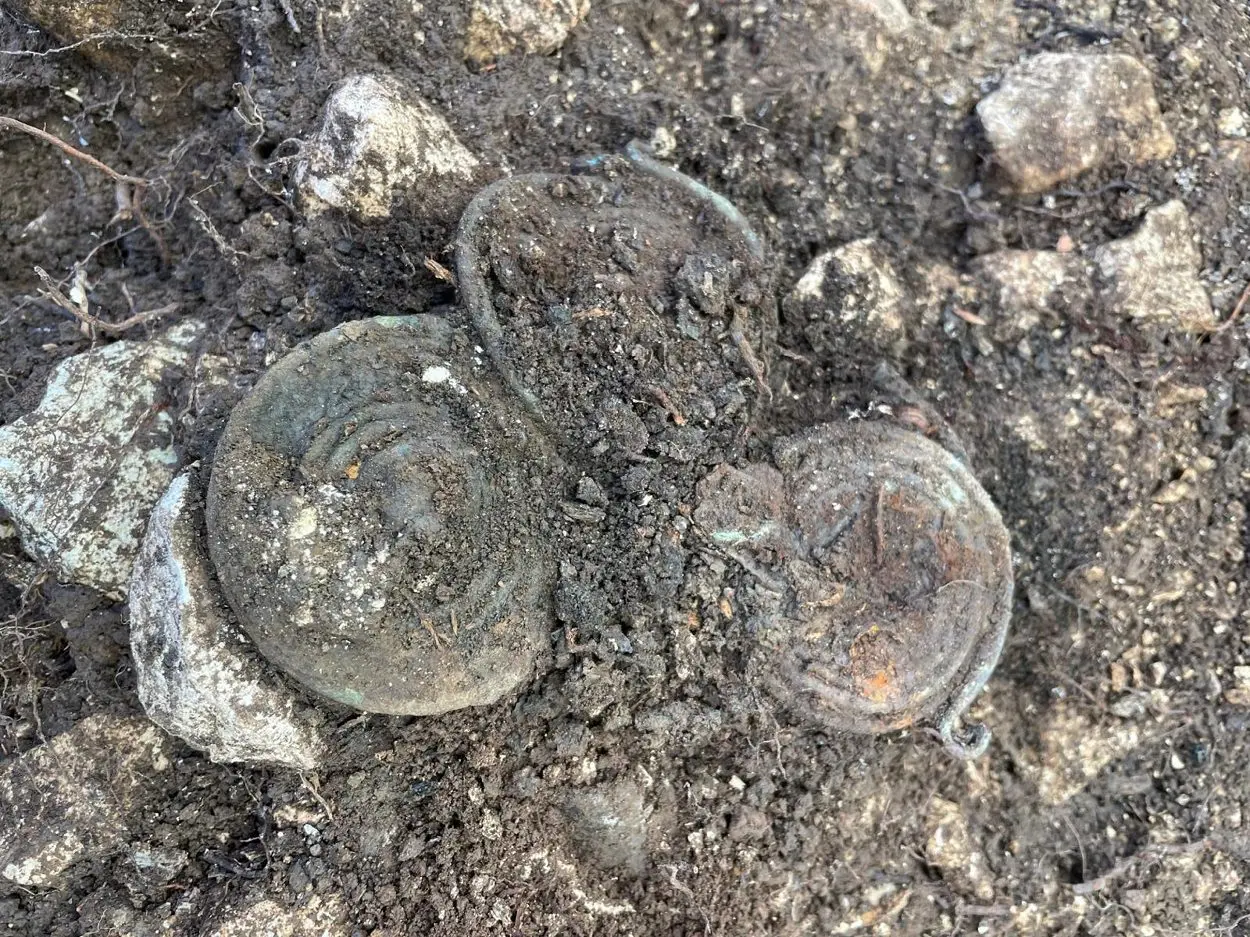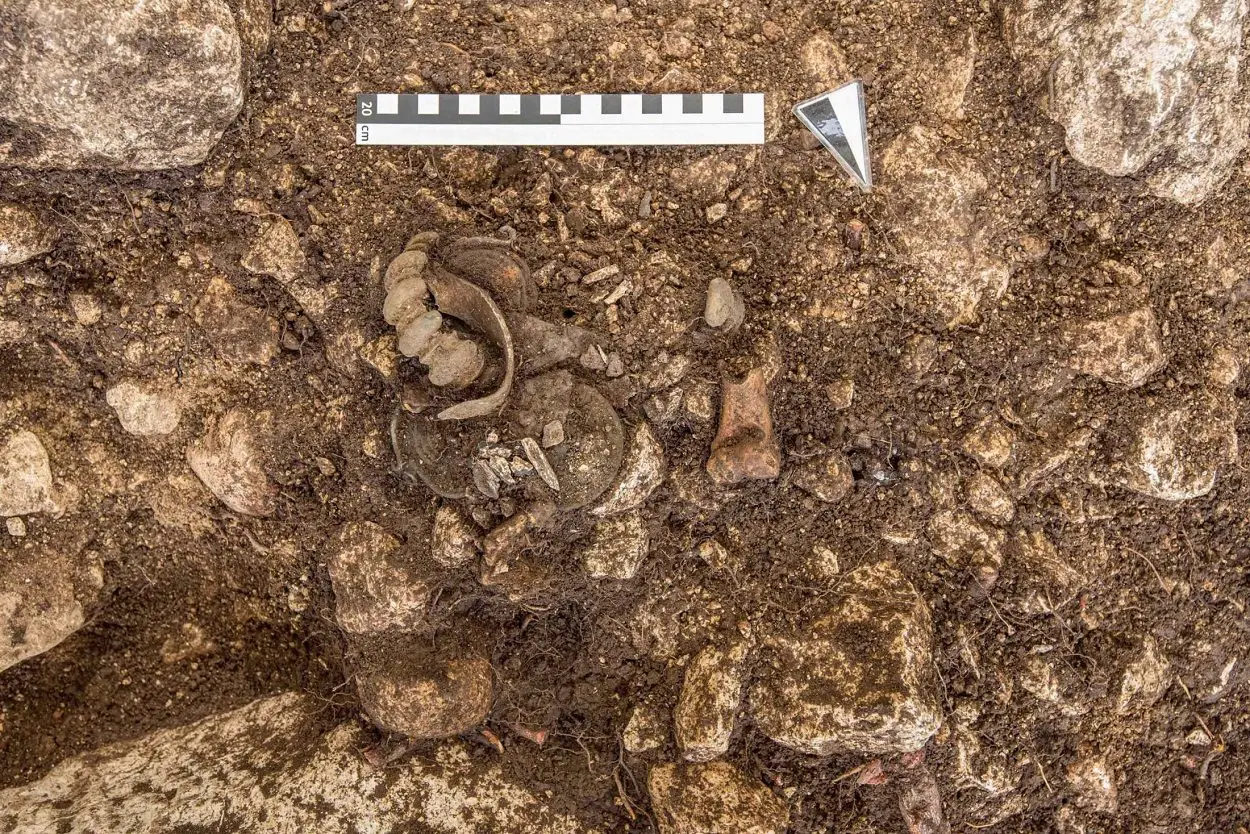Archaeologists from the Vienna Natural History Museum have uncovered a high status Iron Age burial in the town of Hallstate, located in the district of Gmunden, Austria.
Hallstatt is known for its production of salt dating back to prehistoric times, and gave its name to the Hallstatt culture, a people that emerged during the Late Bronze. Material from Hallstatt has been classified into four periods, designated “Hallstatt A” to “D”. Hallstatt A and B are regarded as Late Bronze Age, while C and D relate to the Iron Age.
The burial is situated in an Iron Age cemetery first discovered in 1846, where archaeologists excavating the site in 1863 found over 1,000 graves and numerous grave goods.
Recent excavations have found a burial pit containing a cremation grave and well-preserved bronze objects. Finds include a ribbed arm ring, spirals of thin wire (possibly from a fibula brooch), a bronze blade with traces of the wooden handle, and a piece of iron lead that has been identified as a belt fitting.

All the artefacts were found intentionally broken or bent and placed alongside the remains of animal bones and food residue. According to the researchers, the intentional damage of metalwork was a ritual offering and may have been an expression of the death of the buried individual.
Several spiral discs were also discovered, where upon closer examination the team have found traces of preserved fabric. The researchers suggest that the burial was placed in a textile bag and the spiral discs deposited on top, revealing for the first time a new distinct burial practice of the Hallstatt culture from the Iron Age.
Header Image Credit : NHM Vienna, Andreas W. Rausch





